Universal Military Service
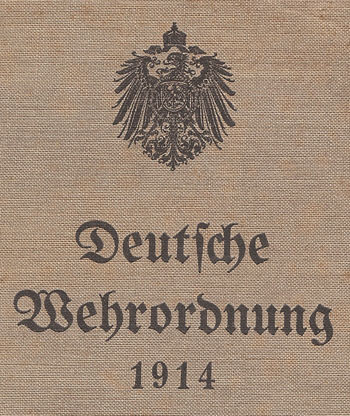
Life within society started with school. Germans started at age 6 and had to go to age 14. This was primary school or Volksschule. This was free to students, literacy was about 100%. Unlike American public schools Imperial German secondary school was not free to the parents. It is also VERY confusing because if the child was going to attend secondary school he transferred into a private secondary school at age 9-10. So parents had to start shouldering the economic costs of the education from age 9 until they could stop supporting the child. If the child would not be sent to secondary school he would remain in primary Volkschule until age 14 all at no additional cost to the parents. There were of course private preparatory schools, which were not free. These eight years (6-14) of education completed the education of many who attended. Very few students received a secondary or higher formal education. The numbers are actually staggering. In 1885 for example, there were 7.5 million children in elementary schools, but only 238,000 attended secondary schools. For rural families children were needed to work on the farm. In urban families children were required to supplement the family income. Only children from bourgeois or noble families had any hope of going to secondary school. Truancy was a huge problem in urban areas. In one year alone in Düsseldorf, over 13,000 parents were spoken to by police about truancy out of the total population of 91,000. Over 1000 children had a daily police escort to school. xxxiii
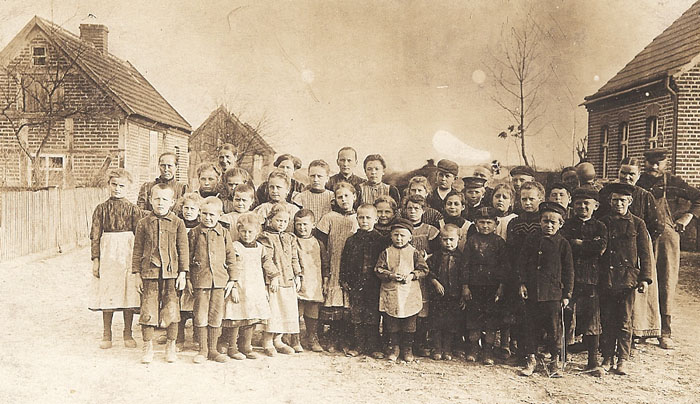
Economic pressure characterized the entire German secondary school system. Those students entering into the secondary school system all started the same but graduation varied significantly. The longer one stayed in school, the more potential benefits would accrue. However, the longer you stayed in school, the higher the economic burden was to the family supporting the student. There was a definite incentive and pressure on a student to graduate and start earning their way. This could start their seniority clock, as well as reduce the financial burden on the family. As a result, students began leaving the secondary schools to enter the workforce after the Untersecunda (6th secondary) year as they weighed the costs and benefits of remaining in school.
Every man in Germany was liable for military service with the exception of some royalty and criminals that had been in the penitentiary. This was stipulated in German law (Wehrordnung) in 1888. xxxiv This is a substantial statement, which is very misleading. If every man in Germany was in the army the German military would not have had a manpower shortage in completing the Schlieffen plan. There is this imaginary thought that all Germans entered the Army and learned from the school of the nation all things German. It was not exactly that way. Germany drafted only about 55% of its available manpower. France drafted about 80%. The Chief of Staff wanted to enlarge the numbers of people drafted, but the War Minister was against it. A future leader from the General staff Eric Ludendorff estimated that in 1912 alone 540,000 adult Germans avoided any kind of military service with their class. xxxv
Recruiting and Musterung
Recruiting was a year-long cycle. Between the first of January and the middle of February, a list of service eligible young men from the subject class year was put together. Requests for exemption from service were considered by the lowest recruiting committee. The recruiting committees were made up of military people from the Landwehr-Bizirke. Citizens were categorized by class designated by the year in which they were born (Jahrgang). Though the list was prepared, the class would be mustered or assembled at one location for each recruiting committee. This was an annual spring event called Musterung. Four different groups of men went to this medical examination. 1.) The class in question, 2.) “Restanten” or men who were required to repeat the examination from the two previous years, 3.) and a few older people that had been allowed to postpone their service for various reasons, 4.) Younger men allowed to come up before their class primarily these were enlistees. The examination was a large event attended by many families as the young man went through medical and psychological testing. There was also a period where a candidate could list the reasons why he should not serve or be deferred for a year. The doctors had a specific list of criteria for fitness. Recruits were supposed to be of a certain height and weak men were deferred one year at a time for up to three years. There was a process of requesting exemption which was often granted in cases where the recruit was the sole breadwinner, if they were indispensable in their place of work.xxxvi After the tests, a list was made up and specific individuals were crossed off the list. Those removed from the list included one year volunteers, two, three, or four year volunteers or enlistees, those who had not shown up, those physically morally or mentally unfit. xxxvii
Each man undergoing the examination was given one of four rankings:
K.V. = fit for active service.
G.V. = fit for garrison duty in Germany or along the lines of communication.
A.V. = fit for labor employment only.
D.U. = permanently unfit. xxxviii
In the provinces that were not ethnically German, there was a resistance to wanting to be enlisted -- especially in the bourgeois. The residents of Alsace-Lorraine were culturally used to the French system where one could "buy" a replacement. This was not allowed under the German system. xxxix Germans from the bourgeois wanted to be selected as a badge of honor as well as the gateway to many jobs. It was also expected that a male would lose his virginity during his service time and know all that is needed to know to become a husband. It was a commonly held belief that girls liked men in uniform.
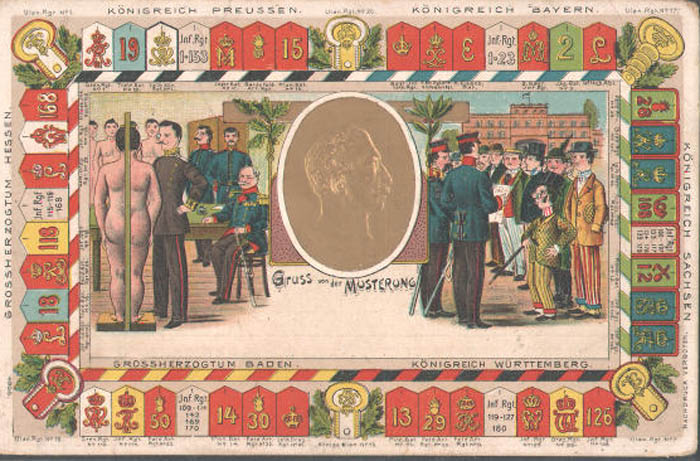
For those candidates who remained and where qualified, lots were drawn to determine who should serve and who would not if there were more candidates then spaces required. This lottery number remained with the candidate and soldier throughout their lives. After the Musterung chosen candidates would be sent to various units. Different units had different minimum standards. For instance infantry had to be 1.54 m tall, and engineers had to be 1.57 m tall. Guard infantry were supposed to be 1.7 m tall. Railway troops were not allowed to be colorblind. This entire operation was completed by the first of May each year. Those selected in the class began their Dienstpflicht.
There was also a small ritual in the days prior to reporting for duty. Those selected would march through town beating drums and demanding money from folks to pay for a last drink. The local ladies would tie bright ribbons to the hats of the soldiers to be. This was a two or three day ritual which was often funded by those not selected. xl
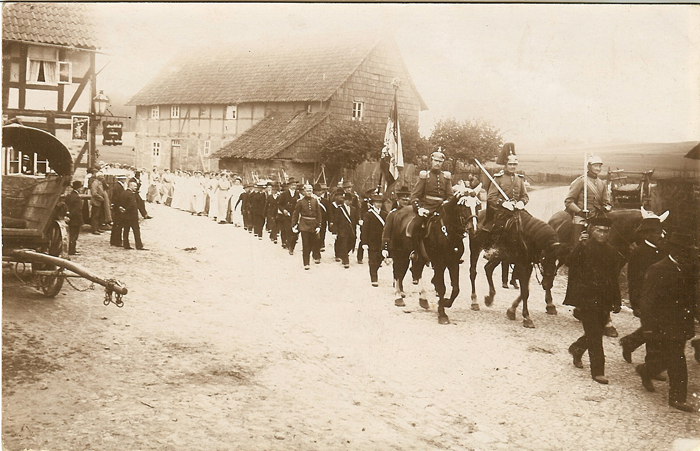
|
Total going to Musterung |
Posted to Landsturm
Ban I |
Posted to Ersatz Reserve |
Dienstflicht |
Total incl.
Volunteers, Navy, and rejections |
Restanten for next year |
1911 20 yr olds |
563,024 |
16,680 |
6,141 |
106,249 |
565,520 |
705,864 |
21 yr olds |
367,688 |
13,925 |
4,817 |
53,185 |
22 yr olds |
289,098 |
102,821 |
77,486 |
62,510 |
Older and younger |
51,574 |
8,881 |
3,699 |
1,981 |
Total |
1,271,384 |
142,307 |
92,143 |
223,925 |
|
|
|
|
|
|
|
1912
20 yr olds |
557,608 |
15,022 |
5,969 |
112,624 |
572,168 |
717,700 |
21 yr olds |
385,163 |
12,366 |
4,621 |
57,757 |
22 yr olds |
294,825 |
101,475 |
73,243 |
67,261 |
Older and younger |
52,272 |
9,059 |
3,873 |
2,075 |
Total |
1,289,868 |
137,922 |
87,706 |
239,717 |
|
|
|
|
|
|
|
1913
20 yr olds |
587,888 |
12,825 |
5,521 |
125,001 |
622,360 |
705,659
|
21 yr olds |
380,331 |
10,371 |
4,439 |
80,767 |
22 yr olds |
305,619 |
87,189 |
73,064 |
97,371 |
Older and younger |
54,181 |
7,915 |
3,887 |
2,536 |
Total |
1,328,019 |
118,300 |
86,911 |
305,675 |
xli
The increase in Army strength after 1912 is very evident. The majority of the Landsturm Ban I and Ersatz Reserve were selected from those who were examined for the third and last time for the 22 year olds. Rejected men were not liable to any form of military service. Those rejected amounted to five or 6% of the total mustered number and Restanten were released from service after three Musterung and entered into the Landsturm Ban I. xlii
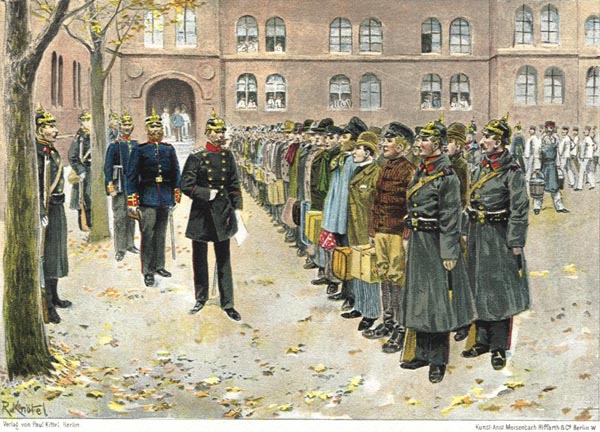
Dienstplicht
There were basically two divisions of manpower, active military service (Dienstplicht and Landwehr) being one; and the Landsturm being number two. In certain theory, this was supposed to cover the ages of 17 through 45. Walter Bloem, author of The Advance from Mons was a reserve captain at the age of 46 in 1914 so as usual there were exceptions for officers. xliii Historically since the Napoleonic Wars the Germans had two kinds of armies: a professional army, and a people's army known as the Landwehr. The conservative aristocracy liked a professional army officered by the aristocracy and sworn directly in allegiance to the king. The more liberal middle class and lower classes liked a "Landwehr" officered by the middle class and regulated by a parliament. The system changed over time and provided 40 years of peace incorporating all classes. xliv
Active military service was known as Dienstplicht (often this is referred to as Dienstzeit, but that word primarily addressed the active years of the class). This breaks down into two further divisions, the active Army and the reserve forces (both part of Dienstplicht). The duration of both together being seven years. The second group is the first and second ban (the word ban is often exchanged for the word levy) of the Landwehr.
The start date of active service is worth considering. Even though it is not a proper term, I will refer to the standard service soldier as a draftee. Most guys got out of Volksschule at the age of 14. Required active service started at the age of 20. Between the ages of 17 and 20 you were not part of the Dienstplicht. You actually were assigned to the untrained Landsturm, (we will cover this more later). A student who passed the one year volunteer exam could delay entry until he was 20. Conversely, a one year volunteer could join at the age of 17. Once you were in the army a normal draftee served two years in the infantry or three years in the cavalry and horse artillery. This seems to vary a lot by branch. For instance soldiers in train battalions seemed to have spent a very short time, measured in months. For the remaining years, up to a total of seven, soldiers then became part of that unit's reserve. During the reserve time, you were called up twice for training. Lengths of training times seem to vary a bit but not more than eight weeks. At the end of your active time, if you wanted to stay in the army you could stay on as a professional called a Kapitulanten. An interesting piece of trivia is that the Kapitulanten actually were paid about 50% more than the normal draftees. They were also given a monetary inducement to reenlist. xlv
Another type of Dienstphlicht was volunteers or Freiwilliger. There were two different types of Freiwilliger; multiyear and one year. Multiyear Freiwilliger were basically enlistees. Given an application to a specific unit substantiating parental permission, and the family’s ability to do without them, they could apply for two, three or four year status. The Unteroffizieres would vote to accept them or not. This was not comparable to a one year volunteer and the family did not pay for the equipment and sustainment of this kind of a volunteer. While much understanding goes into the volunteers 96% of all soldiers were draftees. xlvi
One Year Volunteers
A one year volunteer (OYV) had to equip themselves (rations, quarters, uniforms and equipment). They had to pay for it all to include a horse (if needed) or had to pay into the remount fund. The cost was pretty substantial. It was considered to be generally equal to the cost of a year at university, and very much dependent upon which kind of unit a one year volunteer decided to go into. He could choose his regiment; however, infantry, jägers, engineers, and foot artillery were expected to pay between 1750 and 2200 marks for their year. Field artillery and train increased the cost from 2300-2700 marks. But for cavalry and mounted field artillery, the costs soared to 3400 to 3600 marks a year. xlvii
The payback was.
1. The OYV only had to do one year of active service before being transferred to the reserve. This was in place of the 2-3 year active requirement.
2. The OYV could start military training at age 17 at the earliest. The normal guy, who was more like a draftee started at age 20.
3. The OYV if he passed the prerequisite examinations could be entered as an officer aspirant or NCO in the reserves. Having a reserve commission was considered to be the open door for a successful civilian life. Taking this test to become an officer was voluntary, conducted at the end of the active-duty year, and had to be sponsored by the active company commander. xlviii
Medical OYVs were yet different with a 6 month OR requirement in the active force and they jumped to full commission in the Medical department for the last 6 months as an Assistant doctor, Einjahrfrewilligeartz. xlix
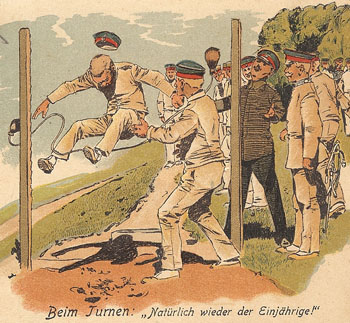 |
OYVs could join the service with their class on the first of October each year. They were grouped together with the other one year volunteers and their training was separate. Often their training consisted of only a few hours a day. l After three months they could be put into a special course, and after six months, if all went well, they could be promoted to supernumerary Gefreiter. The best of the class after nine months, could be promoted to supernumerary Unteroffizier. All this talk about supernumeraries is a reinforcement of the understanding that these guys were extra or supernumeraries to the establishment. One year volunteers were sometimes allowed to eat in the officer's mess. Not what the officers of the regiment but in a separate room. li |
The OYV could become an officer aspirant in the reserves if he wanted to, was recommended by his active company commander, and passed or requisite tests at the end of his year of service. If the one year volunteer did not meet all these criteria he could be passed into the reserves as a normal OR or as an aspirant NCO. If all of the criteria were met, he would become an officer aspirant in the reserves and promoted to supernumerary Unteroffiziere if he was not already at that rank. The officer aspirant was intended to go to two different training sessions. One session per year for the immediate two years after he took the aspirant test and left active duty. During this first session, he was instructed on how to be a platoon leader and took a test at the end of the eight week session. If the individual passed this test, he would be promoted to Vizefeldwebel. lii
Of those completing their one year only every second recruit was recommended by the company commander as a potential officer. One third of those who entered military service went on to become reserve noncommissioned officers. And 13% were discharged without any promotion. liii A Bavarian army example in 1906 showed that 43% of the one year volunteers left service with the recommendation of the company commander. Of that group only another 43% or a total of about 18% of the 1906 one year volunteer intake, actually received a reserve officer commission. liv
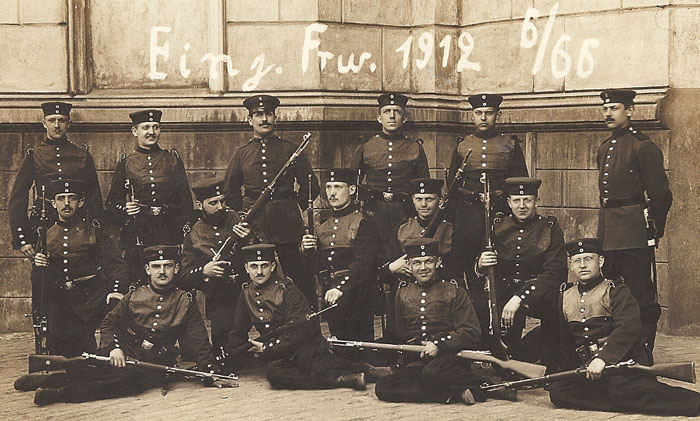
There was a conscious class distinction between the one year volunteers and the "common soldiers". Not only was the training separate but the one year volunteers were from a higher social standing. The only way the "common soldiers" got back was to require the one year volunteers to buy a round of drinks. For many of the one year volunteers military life was the first time they had come in contact with the lower levels of German society. One of the most common ways to differentiate these classes was that the one year volunteers refer to each other using the formal "Sie". Lower-class soldiers also use this form of address for one year volunteers. "Common soldiers" used the more familiar “du” when addressing each other. lv
Religion played an important part in the acceptance process. It is instructive however that in 1913 almost 46% of all Jewish soldiers were one year volunteers. This is as compared to 2% of the Protestants and 1.5% of the Catholics. Here you have the Jewish soldiers being of higher social standing than many of the common soldiers creating a resentment. lvi
The Non-Commissioned Officer.
Non-commissioned Officers (NCO) came from two sources, either promoted from the ranks or having gone through the NCO training schools. Students graduated from Volksschule at approximately the age of 14. Military service would not begin until age 17 when young men could be inducted into the Landsturm. In addition to work, there was an option of joining a NCO preparatory training school (Unteroffiziervorschulen). There were nine such schools scattered throughout the empire (Annaburg, Bartenstein, Frankenstein, Jülich, Mölln, Sigmaringen, Weilburg, Wohlau, and Marienberg). The preparatory school had a general curriculum with much attention paid towards physical development throughout the two-year course. Once graduated from the preparatory school pupils could go to a NCO school (Unteroffizierschulen). There were eight of these (Marienwerder, Northeim, Potsdam, Treptow a/R, Weissenfels, Wetzlar, Fürstenfeldbrück, and Marienberg). The course lasted two years for preparatory school graduates or three years for those who joined the NCO school directly without having gone through the preparatory school. This was a purely military school, whose graduates were either 19 or 20 years old. Upon graduation, they had to contract to remain in the active Army for four years. Graduates were posted to the regiments with some coming out as sergeants and others as Gefreiter. These schools accounted for about 25% of all NCOs. lvii
The NCOs promoted from the ranks, were generally those who had reenlisted (Kapitulanten). While there was no specific time in grade requirements for promotion, it was seldom done in less than two years. Annually the members of the new class were scrutinized and those expected to reenlist and be suitable as an NCO attended special instruction within the regiment. lviii
In the reserve and Landwehr some selected soldiers were provided special training as aspirant Unteroffiziere. Promotions to the rank of sergeant and above were not done until mobilization. However, Vizefeldwebel could be bestowed on older trainees and those whose social position was in accordance with a higher rank. lix
One large advantage in being a noncommissioned officer is that it was a requirement for employment for many positions as clerks or shopkeepers. Noncommissioned officers who left the service joined the Landwehr or Landsturm appropriate to their ages.
Reserve Units
Active units were not full. Reservists filled them up in time of mobilization. An active infantry company was supposed to be 250 NCOs and men. When Bloem first addressed his company, “#2” company, 1st Battalion, 12 Grenadiers, early in the mobilization of 1914, he had 14 NCOs and 162 men, of which 50 were reservists who had already reported in. lx Now the numbers get a little complex here. After your active time, there were an additional five classes of infantryman. Looking at the start of the war: the active-duty soldiers were those who had turned 20 in 1912 and 1913, which were born in 1892 and 1893. The reservists, where the next five classes: 1891, 1890, 1889, 1888, and 1887. There were more reservists than there were positions in the active regiment. Left over reservists formed or filled out other units.
Active Units :
54% active duty soldiers
46% Reserve soldiers.
Reserve Units:
1% active duty soldiers
44% Reserve soldiers.
55% Landwehr soldiers from the 1st Ban
Landwehr Units:
62% Landwehr soldiers from the 1st Ban
38% Landwehr soldiers from the 2nd Ban lxi |
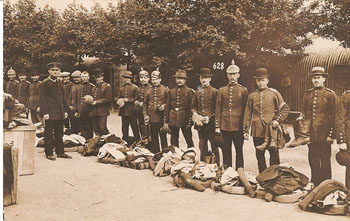 |
Once again, it gets fuzzy. You might assume that the 12 Grenadiers had a 12th
Reserve Grenadier outfit and a 12th Landwehr Grenadier outfit. This is patently false. A reservist who trained with the 12 Grenadiers could very well end up in another unit. There might not be a reserve Regiment of the 12 Grenadiers. There were 217 active regiments. But there were only 113 reserve regiments. The Landwehr was something entirely different. The major difference from an organisational point of view is that reserve personnel in peacetime were affiliated to a specific regiment whilst those of the Landwehr were controlled and administered solely by the Landwehr-Bizirke.
The Landwehr
After your seven years of Dienstphlicht your class passed into the Landwehr (in general at the age of 27). Command-and-control really changed here. You are no longer under the control of the Regiment but rather under the area Army Corps district. The Army Corps district was further broken down into brigade districts and brigade districts broken down into Landwehr districts or Bezirkskommandos. Again, this was broken down into a first and second ban. The first ban lasted for five years. In general there were two training periods in the first ban, lasting from one to two weeks. From the first ban, you are passed into the second ban at about age 32 until you were 39. There was no training requirement in the second ban. There were 96 Landwehr regiments. However not all of these had the same number of battalions. The study of the correlation between active regiments and Landwehr battalions/regiments is a massive undertaking far outside the scope of this article. Landwehr units got hand me downs and the what ever was left over of both active and reserve units. For instance, in 1914 there were no platoons of machine gunners and no field kitchens in the Landwehr units. Many units were issued the 88/05 old style rifle and as many as 20% of the units still wore blue uniforms in 1914. The shortage of equipment was especially true in those Landwehr regiments assigned to fortress duty. lxii
Landsturm.
The Landsturm also had two bans. The first ban included all untrained folks that were not on active service from the ages of 17 through 39. I should point out here that those between the ages of 17 and 20 who have not yet entered service and have had no training are enrolled in the first ban of the Landsturm. The second ban included all former soldiers and untrained individuals between the ages of 39 and 45. Second Ban Landwehr soldiers joined the second band of the Landsturm at age 39. This was a really rough militia. There was no training requirement. A home guard at best. lxiii
Ersatz Reserve.
Not everybody was selected for active service or Dienstphlicht. The 1907 statistics show that 240,000 of 556,000 eligible males never entered Dienstzeit. There simply were not enough slots. Somewhat made up of people who failed the Musterung physical for one reason or another. (Many of these were extremely minor.) There were also exceptions made for family emergencies and other reasons. If you are one of these excuse service types, you actually were often entered into the ersatz reserve for a period of 12 years. These guys were trained in administrative, not armed, duties three times during a 12 year time period. These training periods could be quite long. Not to exceed 20 weeks in total, if you divide that by three you come close to seven weeks per activation. That's a long time, and apparently not all of these guys did it. After 12 years, if they had completed their training, the class went to the second ban of the Landwehr. If the training had not been completed, they went to the first ban of the Landsturm. lxiv There were really small battalions made up of these guys at mobilization. They were built around brigade headquarters. Initially there were over 90. One of Schlieffen's pet ideas was to use these battalions as maneuver units. These units had absolutely no service support establishment. They were purely men with rifles and had few officers. No supply, medical or other essential support elements. The purpose of an ersatz battalion was to give replacements to their regiments. If an ersatz battalion became a maneuver unit it could not perform this function. Nonetheless, they were needed by 1914, and eventually you got Ersatz divisions. Initially these were used close to the German frontier border.
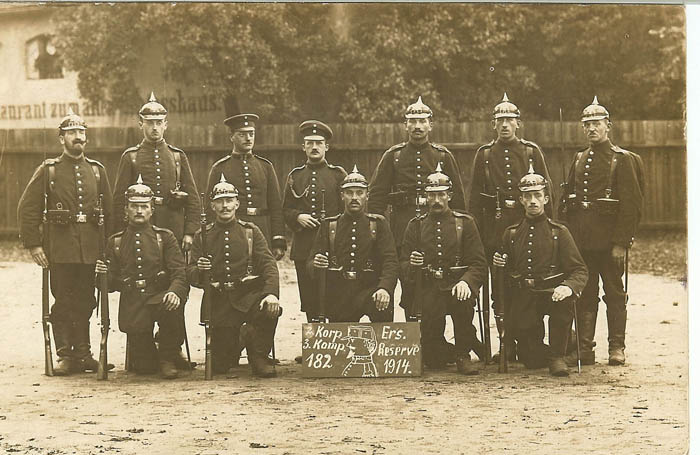
Kriegsfreiwillige
| During the war a large number of young men between the ages of 17 and 20 were allowed to volunteer for active service before their class was called up. In 1914 there were large numbers of these volunteers and they included some men over the age of 20, were in the untrained Landsturm. These men had been released from their peacetime obligation but volunteered anyway. There was a significant falling off of this number by 1915 and estimates were that approximately 5% of the later classes were volunteers. lxv |
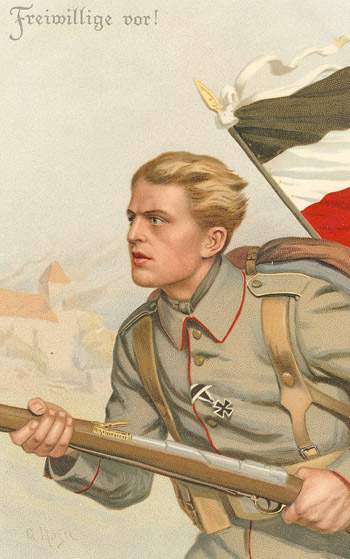 |
Classes in WW1
The large bulk of the reserve and Landwehr soldiers were absorbed in the initial expansion of the Army which took place in July and August 1914. By September 1914 the Ersatz Reserve filled out the new formation reserve divisions. The class of 1914 was called up basically on time at the end of September 1914. They were inducted into the military along with the Restanten of the 1914 muster and mixed in with certain Kriegsfreiwillige. Their induction took over three months as they filled the depots after the Ersatz Reserve. This resulted in approximately a million recruits. They had three or four months training and refilled the existing units as well as created reserve divisions numbered 75 to 82 as well as the Bavarian eighth infantry division. lxvi
After the losses of the winter 1914 – 1915 the Landsturm was extensively used to make up for losses. Landsturm classes were called up in successive batches and continued to provide replacements until the second ban was exhausted late in 1915. Between April and June 1915 the class of 1915 was called up early followed very quickly by a class of 1916 between August and November. The permanently unfit soldiers from the musters as well as those previously excused were re-examined for possible inclusion in the ranks. lxvii
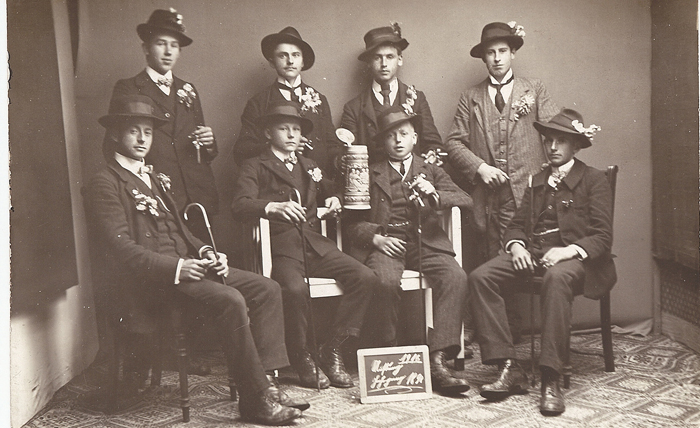
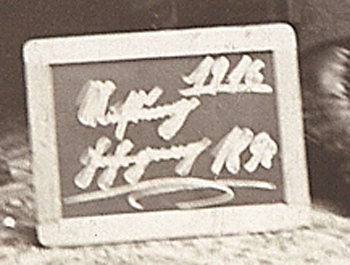
The class of 1917 was called up over 18 months early between January and May 1916. This class was decimated by both Verdun and the Somme. Some of this class was only in the depots for training for three months. The class of 1918 was called up between September 1916 and January 1917 a full two years early. This class constituted many of the higher numbered infantry regiments from 442 and two new divisions such as 231 to 242 and the 15th Bavarian division. the class of 1919 was called up in May and June of 1917 a full 2 ½ years early. This class was primarily sent to the Russian front and more senior soldiers replaced and sent to the Western front. By the spring of 1918 the class of 1920 had been called up. lxviii
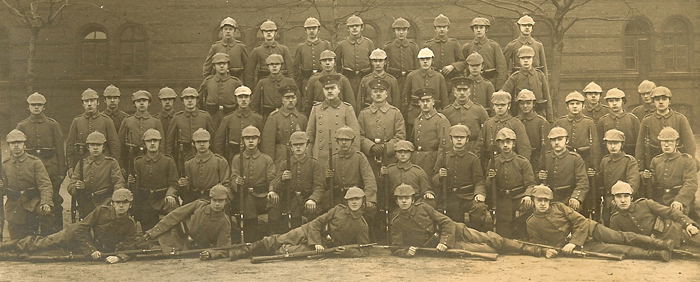
Military Life
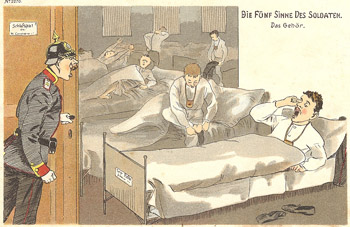 |
Military life was harsh. Recruits were isolated for from four to six weeks before they were allowed to mingle with civilians at all. Discipline was harsh. The suicide rate of 220 to 240 recruits a year was 14 times higher than the civilian population. The barracks however, provided many recruits, better space light and health facilities than they had in civilian life. lxix |
The Flowchart
This chart provides a general guide to how things work in peace time and the ages you could start that specific block. This is not written in concrete. There are many exceptions that are not included here and there is no intent to show the way of a cadet. Things you should take from the chart include: men were kept track of on a list for the untrained Landsturm ban 1, just about everybody went to Musterung and there were many categories that would come out of there to include the Navy which is not covered here at all, you have three tries at Musterung with the repeaters known as Restanten.
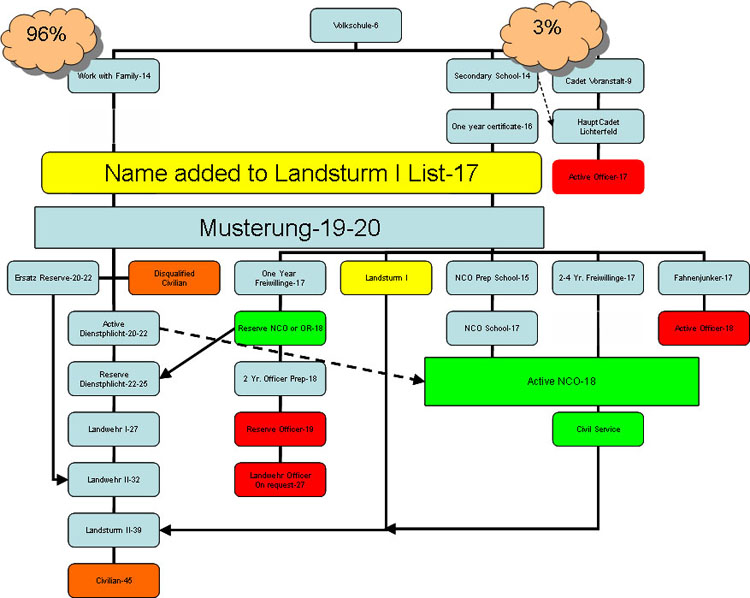
Conclusion
Only 3% of the population went to secondary school. Nonetheless the study of this group constitutes a huge amount of the writing and research of this entire population. This is a clear example of the power of the pen. In addition if you take a look at photographs of the time frame you will see that one year volunteers provide far more than 3% of the pictures. We get a completely biased view that of the bourgeois– most of the population was just getting by and could not afford a picture. This is what Verhey is talking about when he talks about bourgeois domination of the media.
Some of this biased view leads us to where there is a major controversy as to the source of the recruits. Reforms required recruits to generally follow the characteristics of the society. Generally it was considered that soldiers from the countryside were healthier and less likely to be socialist. Recruits from an urban background were less likely to be healthy and more likely to be involved in socialism. However the population pressures of internal immigration had its toll. Before 1850 most of the recruiting took place in rural areas but after the formation of the Empire more and more recruits made their living as wage earners in factories. In the 1890s the source of these recruits became a major subject of political debate. One economist, Lugo Brentano, made the case that two thirds of the recruits came from an urban background. lxx The very emotional other side of the argument claimed that two thirds of the recruits were to come from rural areas. In 1911 just 6% came from the large cities. There is still disagreement as to whether this was the choice of the leadership or the result of poor health of the urban recruits. lxxi
It is my view that this was a choice. The members of the Reichstag that thought something was fishy were correct. Examples of the off-limits areas in Berlin constitute almost 30 pages of a small booklet. The endeavor to keep soldiers away from members of the SPD seems to have been an obsession of military courts and company discipline. There was a consistent effort to keep soldiers from the contamination of socialism. It is instructive that an Army doctor quizzed a group of recruits in 1903-04 with the same kind of questions we find today asked of high school students. What are Social Democrats? -- Answers included: "they are the ones who don't want a Kaiser," "they don't believe in anything," "they want to get rid of the Church and the Army," "they insult the German Army." The recruits gave the impression of being well-informed of issues that affected their life like social insurance, but could not tell the difference between Kaiser Wilhelm I and Kaiser Wilhelm II. They had heard of Bismarck, 25% read the paper regularly, did not know the name of the current Chancellor, and did not know the difference between state and national parliaments.lxxii This was not just a common group of recruits. They had been designated for a Silesian Cavalry Regiment. Of the 174 recruits 147 had come from agricultural backgrounds and 44% of them were voluntary enlistees. The results may have been significantly different had they come from an urban background. The Social Democrats in urban areas had been focusing on youth clubs for those under 18 as political meetings were forbidden to those under that age. lxxiii
So why would the military who controlled the recruiting committees accept candidates who were going to give them major problems later? It seems far easier to pass these guys on than to have to deal with them in the units. Of course the war changed all that. Old standards were adjusted by sheer numbers. But that is another topic…
Go to home
xxxiii Blackbourn, pg. 290-291.
xxxiv Deutsche Wehrordnung vom 22 Nov,1888, Max Galle Verlag Berlin, 1915.
xxxv Strachan, Hew, The First World War, Viking, New York 2003, pg46.
xxxvi Frevert, pg 49 -- 50.
xxxvii Stubbs, Thomas N.G., Imperial German Military Officers’ Helmets and Headdress 1871, Schiffer Publishing, Atglen , PA , 2004, pg. 33.
xxxviii Handbook of the German Army in the War, 1918, pg.13.
xxxixFrevert, pg 52.
xl Frevert, pg. 171-173.
xli Handbook of the German Army in War, 1918, pg. 10.
xlii Handbook of the German Army in War, 1918, pg.. 10.
xliii Walter Bloem, Advance from Mons 1914,Helion & Company, Solihull, England, 2004.
xliv Frevert, pg 155-157.
xlv Rabenau, von Die deutsche Land- und Seemacht und die Berufspflichten des Offiziers, Mittler u. Sohn, Berlin 1913 (Pg. 20-21)
xlvi Frevert, pg 170.
xlvii Exner, Moritz, Der Weg zum Einjährig-Freiwillinen, Verlagbuchhandlung von F.F. Weber, Leipzig, 1897, pg 102-104.
xlviii Exner, Moritz, Der Weg zum Einjährig-Freiwillinen, Verlagbuchhandlung von F.F. Weber, Leipzig, 1897. pg 40.
xlixStubbs, Thomas N.G., Imperial German Military Officers’ Helmets and Headdress 1871, Schiffer Publishing, Atglen , PA , 2004, pg 32.
l Frevert, pg 171.
li Frevert, pg 168.
lii Exner, Moritz, Der Weg zum Einjährig-Freiwillinen, Verlagbuchhandlung von F.F. Weber, Leipzig, 1897
liii Frevert, pg 159-160
liv Frevert, pg. 225.
lv Frevert pg 169.
lvi Frevert, pg.229.
lvii Stubbs, pg. 33.
lviii Stubbs, pg 34.
lix Stubbs pg. 34.
lx Walter Bloem, Advance from Mons 1914,Helion & Company, Solihull, England, 2004.
lxi Busche, Hartwig, Formationsgesichte der deutschen Infantie 1914-1918. Anlangenband. Pg 1.
lxii Busche, Hartwig, Formationsgesichte der deutschen Infantie 1914-1918. Anlangenband. Pg 44.
lxiii Stubbs, pg 32.
lxiv Sigel, Gustav A. (Compiler), Deutschlands Heer und Flotte, Akron, OH The Werner Company 1900
lxv Handbook of the German Army in the War, 1918, pgs 13-14.
lxvi Handbook of the German Army in the War, 1918, pg 14.
lxvii Handbook of the German Army in the War, 1918,pg.14.
lxviii Handbook of the German Army in the War, 1918,pg. 14
lxix Blackbourn, pg.288.
lxx Frevert, pg 191-192.
lxxi Blackbourn, pg288.
lxxii Frevert, pg. 195.
lxxiii Frevert, pg. 195-196.